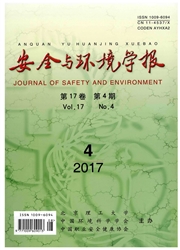

 中文摘要:
中文摘要:
燃煤和有色金属冶炼是我国两个最大的人为汞释放源,联合选择性催化还原脱硝技术(SCR)和烟气脱硫技术(FGD)可以对烟气汞排放实施控制,是一项有潜力的燃煤电厂烟气净化技术。综述了SCR氧化燃煤烟气中气态单质汞的催化机理,总结了燃煤种类、催化剂种类和烟气组分对SCR催化氧化气态单质汞性能的影响。
 英文摘要:
英文摘要:
Coal-fired power plants and nonferrous metal smelting plants are the two largest sources of anthropogenie mercury releases in China. One of the economic technologies of controlling the mercury discharge is through the oxidation enhancement of elemental mercury in selective catalytic reduction (SCR) followed by the capture of oxidized mercury in wet flue gas desulfurization (FGD). The present paper summarizes the proposed reaction mechanisms on SCR catalysts for oxidizing the gaseous elemental mercury, which including the deaprocess, Eley-Rideah, Langmuir-Hinshlwood and Mars- Masessen. Nevertheless, none of the mentioned mechanisms has been verified up to date, to be the dominant one in catalyzing mercury oxidation. Hence, the performance prediction of various catalysts in the mercury oxidation was absent in the literature. This paper also describes the effects of a number of factors such as coal type, catalyst type and the compositions of the flue gas towards the SCR process. It has been found that the class of coal, especially the chlorine content is the major factor that affects the Hg^0 oxidation. In addition, varying chemical formulation and manufacturing geometry of SCR catalysts contribute to different performance in oxidizing Hg^0 . Furthermore, the rate of mercury oxidation is enhanced by the increase of HCl concentration and inhibited strongly by the presence of NH3 on the other hand. Other compositions of the flue gas such as SO2, SO3 and fly ash can influence the oxidation rate and the removal of Hg^0 to a certain extent as well. Briefly, additional research efforts in those critical areas are foreseen to accelerate the development of stability and predictability of the SCR technology.
 同期刊论文项目
同期刊论文项目
 同项目期刊论文
同项目期刊论文
 A comparative study of Mn/CeO2, Mn/ZrO2 and Mn/Ce-ZrO2 for low temperature selective catalytic reduc
A comparative study of Mn/CeO2, Mn/ZrO2 and Mn/Ce-ZrO2 for low temperature selective catalytic reduc 期刊信息
期刊信息
